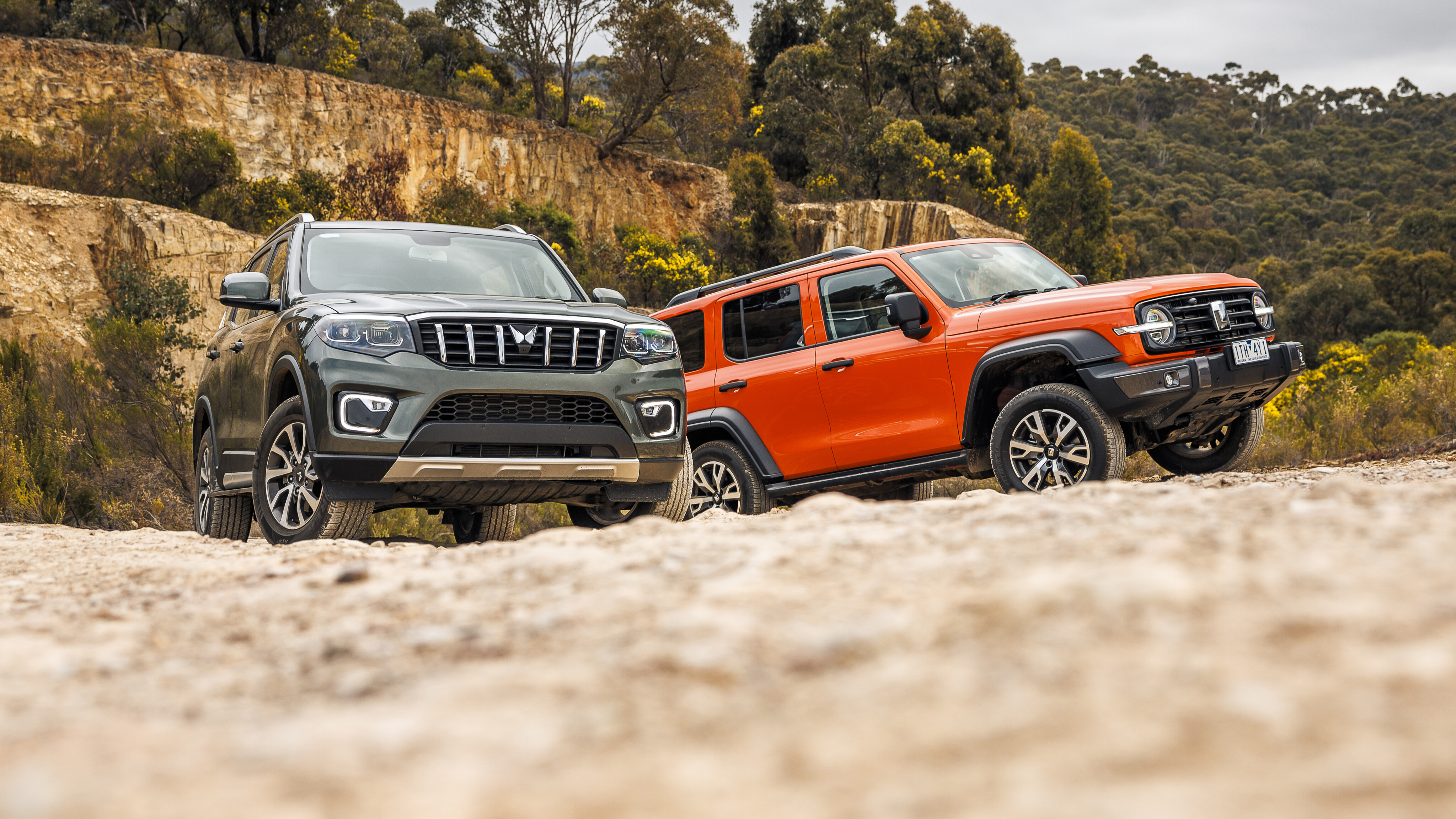
With soaring costs across the board, signing on the dotted line for an adventure-ready off-roader is now more daunting than ever.
A quick glance at used car markets highlights how ridiculous it can now be to buy a feature-packed 4x4 tourer prepared for a lap of the map. It’s enough to sour any ambition to begin your own off-road journey.
We don’t blame you – these days you typically have to leave behind a briefcase stuffed with life savings just to leave the showroom floor with an off-road-ready 4x4 wagon.

But what if we told you there was an alternative way to get into a brand-new 4x4 wagon, loaded with all the space and mod-cons you desire to make it an adventure-ready package – and you’ll only have to part with $50K (give or take) of your hard-earned?
In fact, there are two such options now available in Australia. One hails from India, the other China, and both are loaded with kit and surprisingly capable on both bitumen and dirt.
Enter the GWM Tank 300 in top-spec Ultra guise, and the Mahindra Scorpio in top-spec Z8L guise.
JUMP AHEAD
- How much are they, and what do you get?
- How do rivals compare on value?
- Interior comfort, space and storage
- What are they like to drive?
- How safe are they?
- Warranty and running costs
- VERDICT
- Specifications
How much are they, and what do you get?
Both of these vehicles are value-packed for their respective asking prices.
The Tank 300 is stamped with a $50,990 RRP, while the Scorpio Z8L is $5000 cheaper at $44,990. Thriftier versions of both vehicles are available, with the Tank 300 Lux costing $46,990 and a Scorpio Z8 $41,990.
| Prices (RRP) | |
|---|---|
| 2023 Tank 300 Ultra | $50,990 |
| Mahindra Scorpio Z8L | $44,990 |
The Tank 300 Lux comes with 17-inch black alloy wheels; LED lighting; a 12.3-inch digital instrument cluster; a 12.3-inch infotainment touchscreen with Apple CarPlay and Android Auto; faux leather seats; a sunroof; nine-speaker sound system; ambient interior lighting; a suite of driver assistance technologies; a rear diff lock; roof rails; a tyre-pressure monitoring system; front and rear parking sensors; a 360-degree camera; and crawl control and tank turn functions.
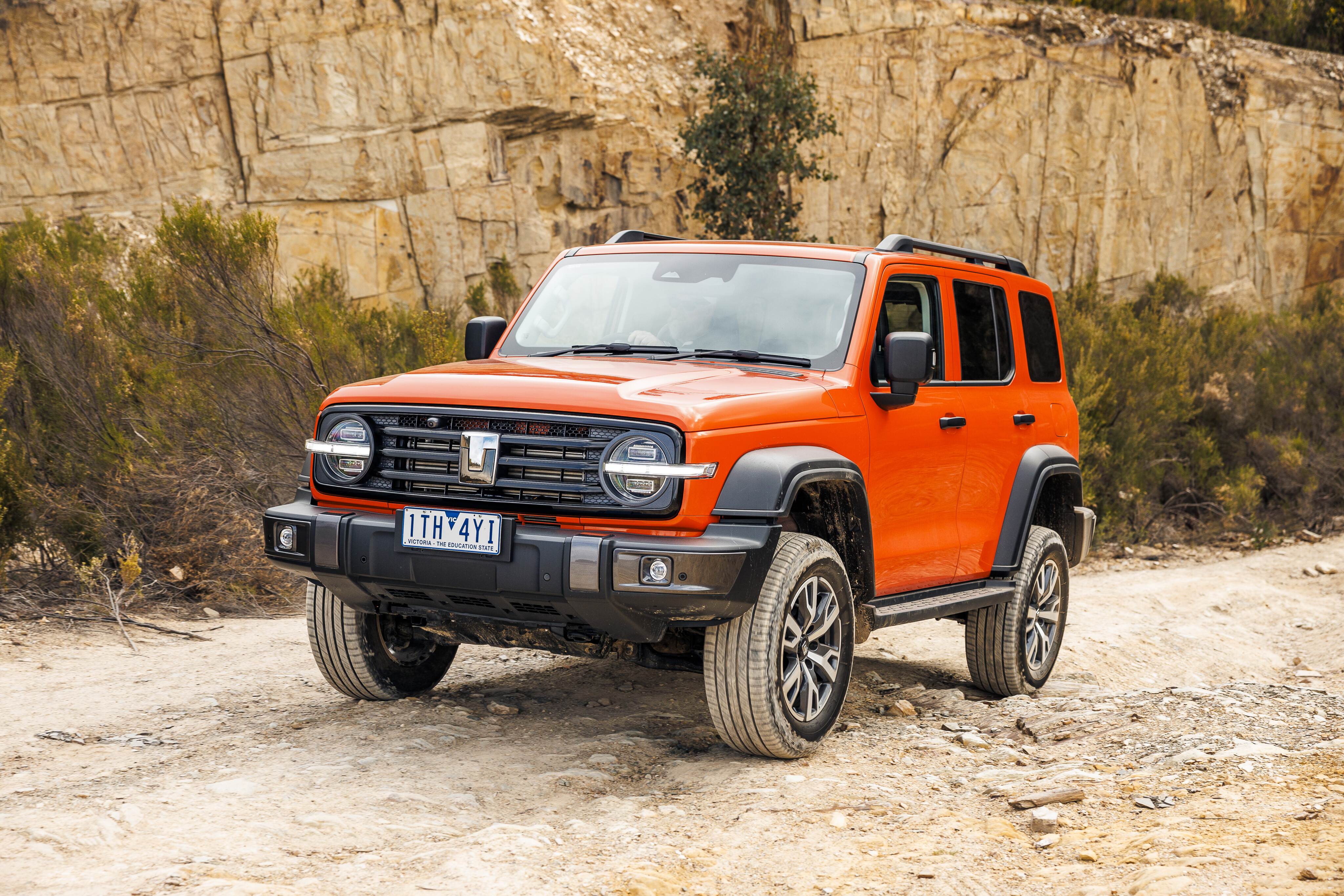
Step up to the Z8L and buyers will receive a 12-speaker Sony audio system; front camera with front parking sensors
Upgrade to the Ultra spec and owners get Nappa leather seating; a massage function for the driver’s seat; heated and cooled front seats; 18-inch chrome alloys; an Infinity sound system; wireless smartphone charging; 64-colour ambient interior lighting; both a front and rear diff lock; and a 220-volt power outlet in the boot.
The entry-level Scorpio Z8 is well-equipped with 18-inch alloy wheels, tan-coloured leather interior trim, an 8.0-inch infotainment system, wired Apple CarPlay and Android Auto, automatic wipers, projector LED headlights, dual-zone climate control, a reversing camera and rear parking sensors, push-button start, keyless entry, and a tyre pressure monitoring system.
Step up to the Z8L and buyers will receive a 12-speaker Sony audio system; front camera with front parking sensors; six-way powered front seating; a seven-inch coloured driver display; and wireless charging.
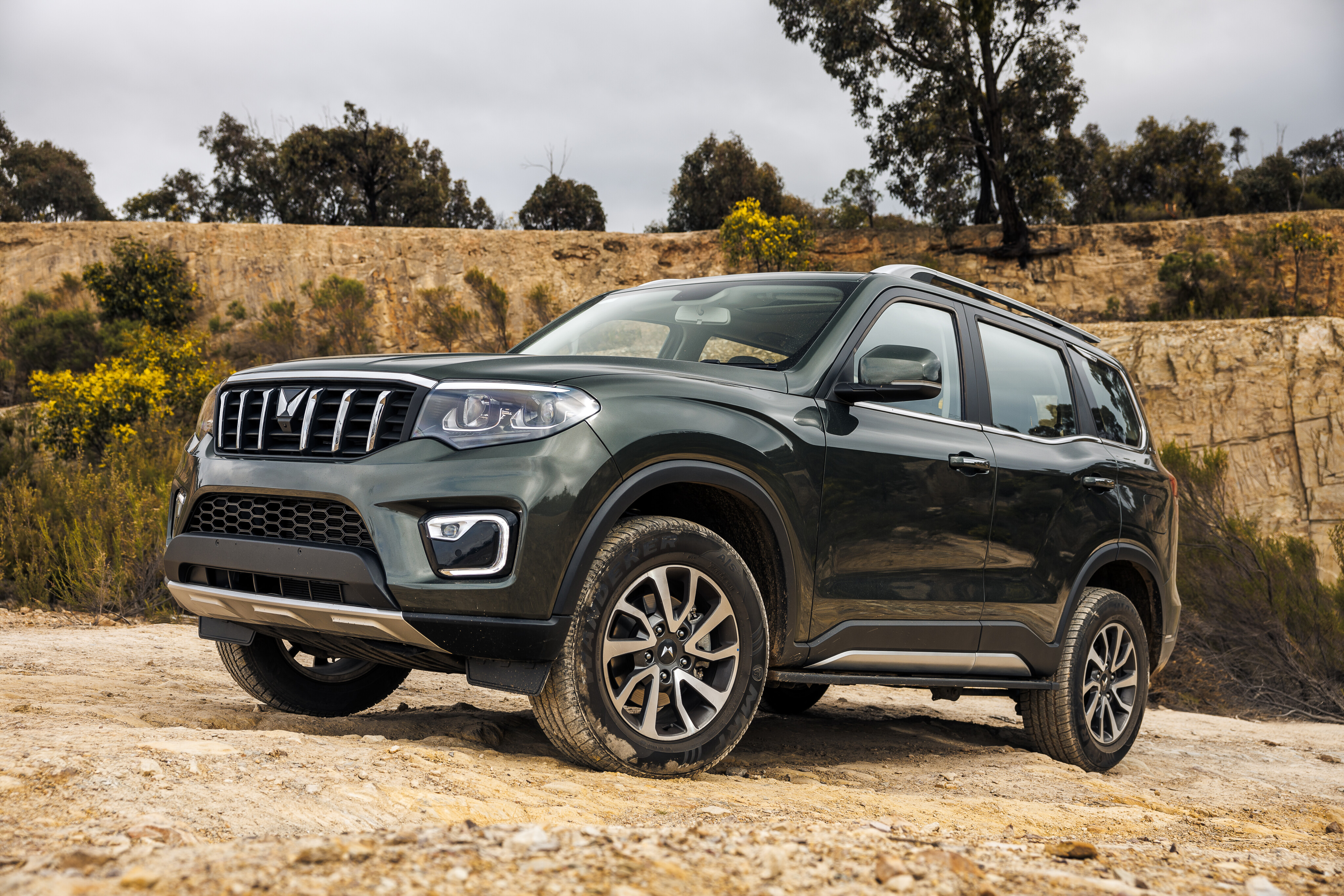
How do rivals compare on value?
There aren’t many obvious rivals to these two vehicles when you take into account both price and level of standard equipment.
Sure, at first glance the Tank 300 could be compared to the Jeep Wrangler due to its shape and style, but similarities between it and the legendary off-roader become quite thin the deeper you dive.
Vehicles like the MU-X and Everest occupy the large SUV space and are therefore not a like-for-like comparison, while something like a Pajero Sport with its 133kW/430Nm 2.4-litre engine is more in line with these vehicles due to its smaller size and cheaper price tag. However, opt for the feature-packed Exceed or GSR variants and you’re looking at spending more than $60K.
At the other end of the scale is the Suzuki Jimny, but it’s considerably smaller and lacks the premium mod-cons found in these two vehicles – but it’s better off-road and costs (according to the books and not real life) less than $30K.
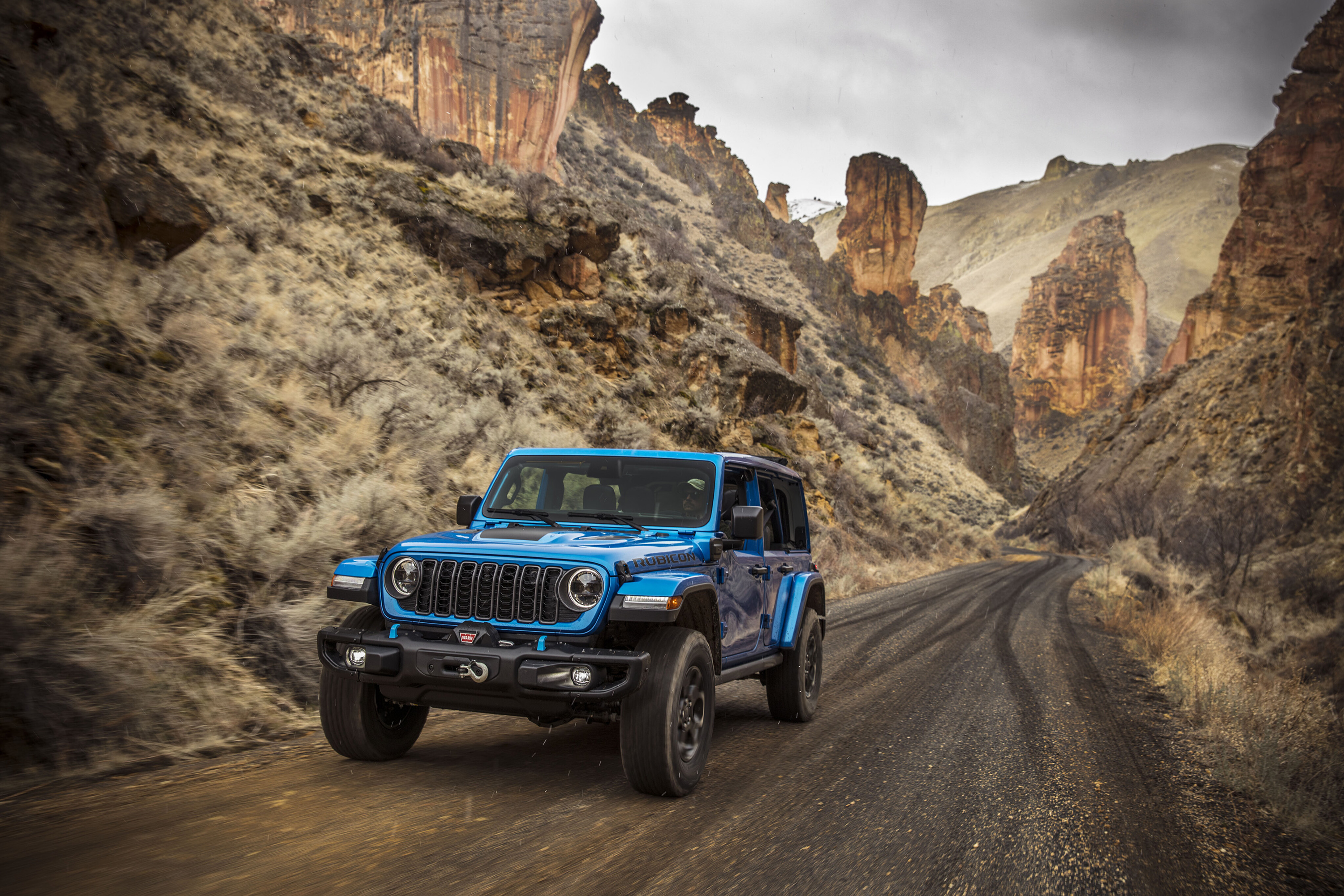
Interior comfort, space and storage
The interiors of both vehicles are plush and brimming with features, and both build qualities are at a level one wouldn’t expect for vehicles at this price point.
The Tank gets Nappa leather with white stitching; heated and cooled front seats; and a sizable 12.3-inch central touchscreen with Apple CarPlay and Android Auto functionality that’s easy to navigate and use.
The omission of physical dials and buttons is disappointing, as the only physical buttons are for climate control functions – all other functions are controlled via the steering wheel or touchscreen.
The front seats – eight-way powered adjustment and four-way lumbar support adjustment for the driver – are well-bolstered, comfortable and provide adequate support. As a boon, a massage function is standard in Ultra variants only.
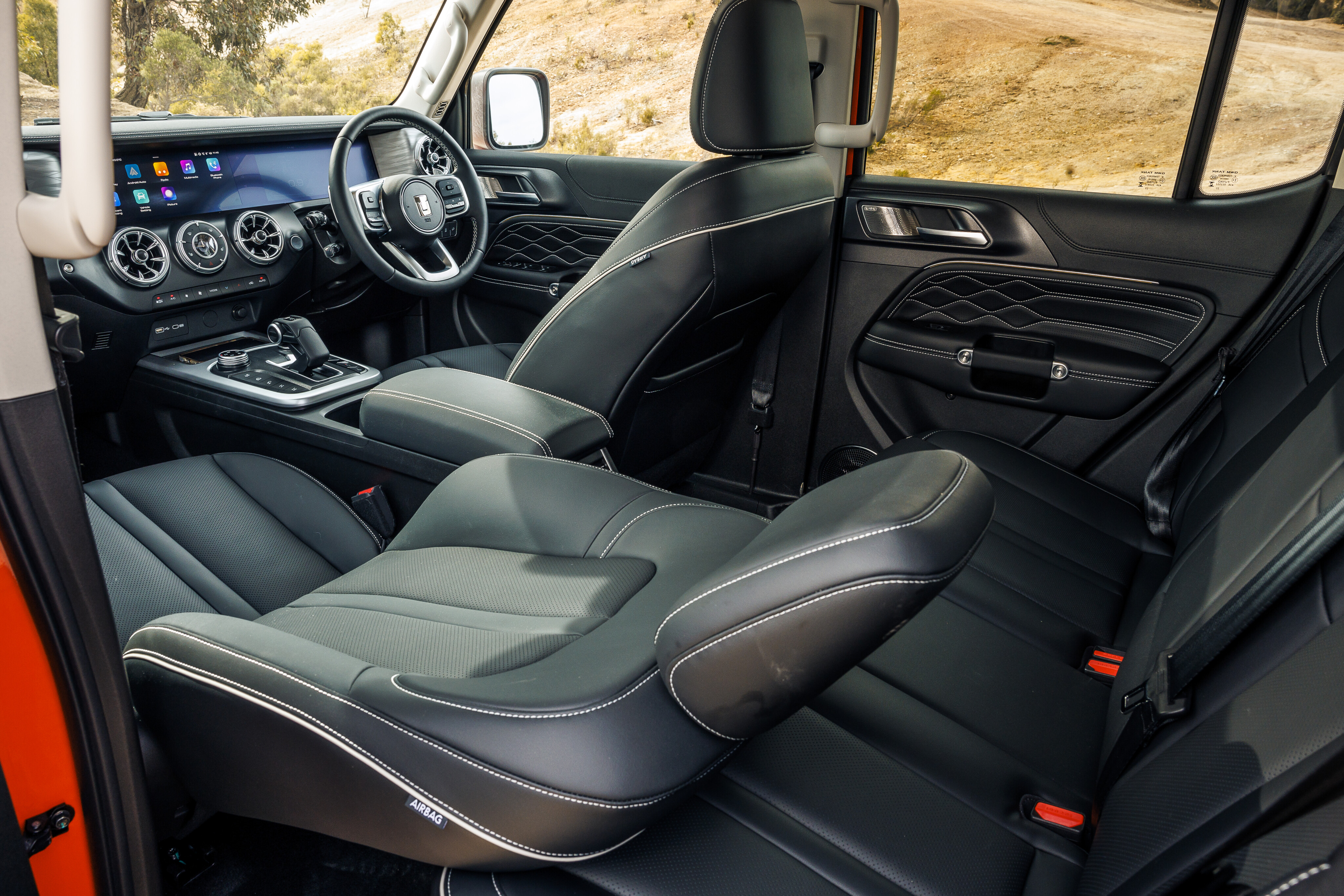
USB ports are within easy reach for both front and rear passengers, while copious storage bins and pockets will swallow most items and accessories – though the door pockets are quite narrow.
For additional storage, the rear seats can be lowered manually to a flat position; but doing so does impinge on front legroom. With the seats lowered, there’s plenty of space to load up for a camping adventure, but be wary of the vehicle’s limited payload capacity of just 446kg. A 220v outlet can be found in the boot of Ultra variants.
As noted in our single-car review of the Tank 300, the metallic trim adorning the front dash and steering wheel has a tendency to reflect sunlight. And for off-roaders, the carpet flooring is prone to get dirty quite easily, and a set of durable floor mats would be high on the shopping list.

Don’t let the Scorpio’s size confuse you. Exterior dimensions alone may lead observers to conclude that it’s a five-seater; but it can actually squeeze in six passengers in its three rows.
Six not seven, you ask? Due to the second-row captain’s chairs, the vehicle can only sit six backsides, with plenty of space between the two seats for passengers to access the third row.
The front seats and second-row captain’s pews are trimmed in faux leather and are extremely comfortable, supportive and not something you don’t expect at this price point.
Unlike the Tank, the Scorpio doesn’t have an excess of storage bins, pockets and cupholders, so the design isn’t as forgiving for those with a tendency to scatter items and coffee cups within a cabin.
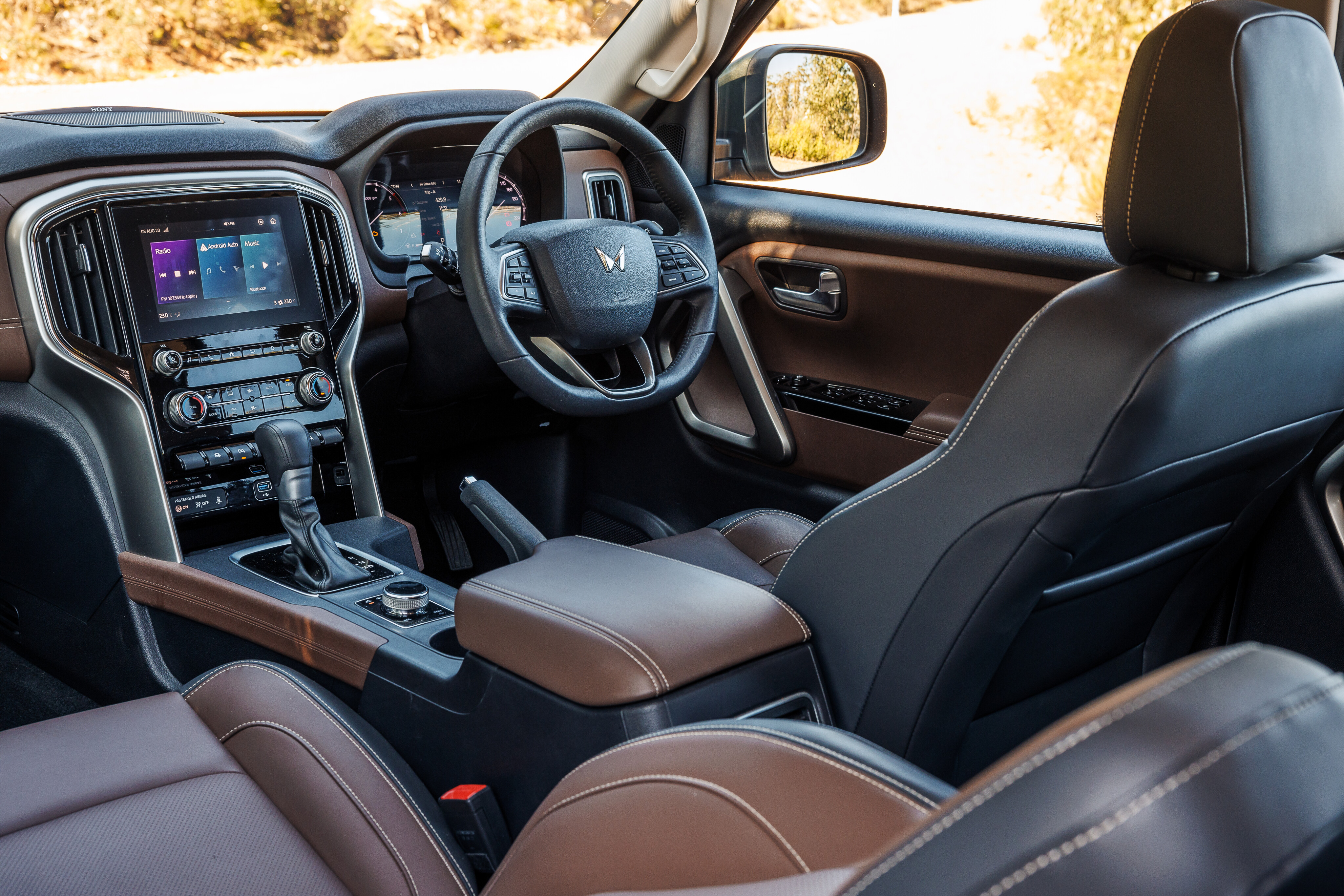
Third-row seats can be folded down to open up more space, but park two passengers in the third row and you’re left with essentially zero room for any luggage or equipment.
The Scorpio is equipped with a smaller 8.0-inch touchscreen that gets wireless Apple CarPlay and Android Auto – Z8L only – and the UI of the screen is well laid-out and easy to use, albeit a little bit delayed in its operation.
What are they like to drive?
Neither of these two vehicles are going to set any benchmarks on bitumen.
The Scorpio’s 129kW/400Nm diesel engine feels somewhat underpowered at times, but it’s counteracted in part by the fact the Z8L weighs in at a lightweight 2100kg. The mHawk is also quiet and refined, and it’s well-calibrated to the Aisin six-speed automatic transmission, making it an easy vehicle to live with day-to-day and on freeway runs.
Feel through the steering wheel tends to be quite light and vague, but the OE suspension (Watt's linkage rear and independent front) is smooth and compliant over bumps and on most road surfaces.
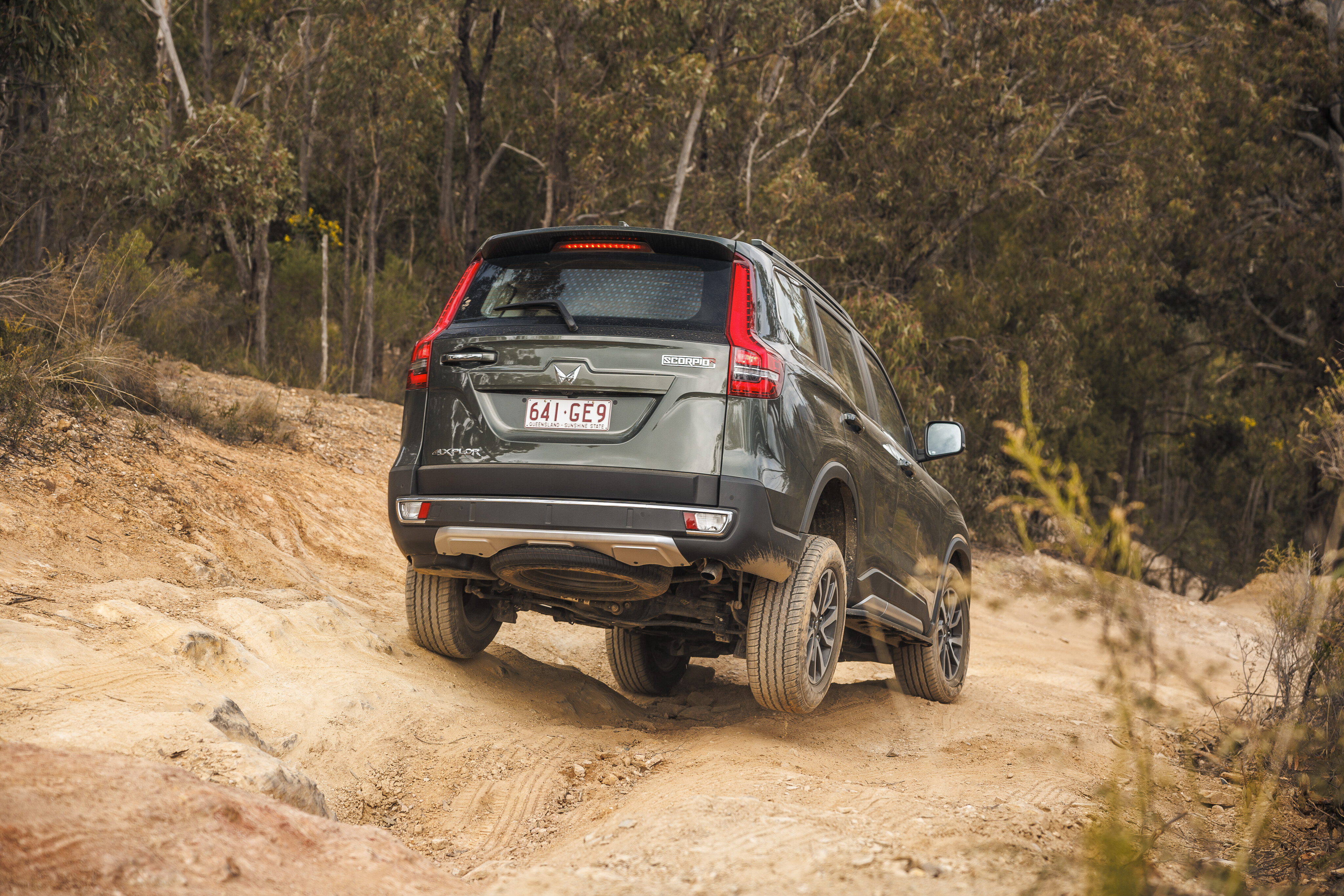
Not so good is the Z8L’s automatic stop/start, which had a few gremlins in its system during our test run but has since been rectified with a software update.
On multiple occasions, the engine failed to re-engage after we toggled with the automatic stop/start button while waiting at a set of traffic lights. Initially we put this down to user error, but further research suggested this has happened to others and is a quirk with the car’s system. Thankfully it has since been fixed.
The Mahindra’s auto-locking diff lock activated accordingly (albeit somewhat clunky to dispatch) and aided in our pursuit of navigating uneven terrain. And the forward-facing camera that’s standard with the Z8L model is beneficial when cresting or descending steep climbs.
Its articulation won’t blow the segment away, but it’s sufficient to overcome most types of moderate terrain, and the suspension soaks up larger bumps quite nicely.
| Mahindra Scorpio Z8L off-road specs | |
|---|---|
| Approach angle | 27.2° |
| Rampover angle | 23.3° |
| Departure angle | 21.3° |
| Ground clearance | 227mm |
| Wading depth | 500mm |
With its double wishbone (front) and multi-link (rear) suspension, the Tank feels noticeably firmer than the Mahindra on blacktop and country roads, which is most obvious on pothole-littered back roads.
Similar to the Mahindra, though, the Tank’s steering feels somewhat vague and off-centre.
The Tank’s 2.0-litre turbocharged petrol engine is quiet and refined, generating slightly more power than the Scorpio: 162kW/380Nm. As mentioned in our solo review of the Tank 300, it would benefit from replacing the road-focused Michelin Primacy SUV 265/60 R18s with a set of more aggressive tyres for on- and off-road duties. As they sit from the showroom, the Michelins err towards on-road rather than off-road comfort.
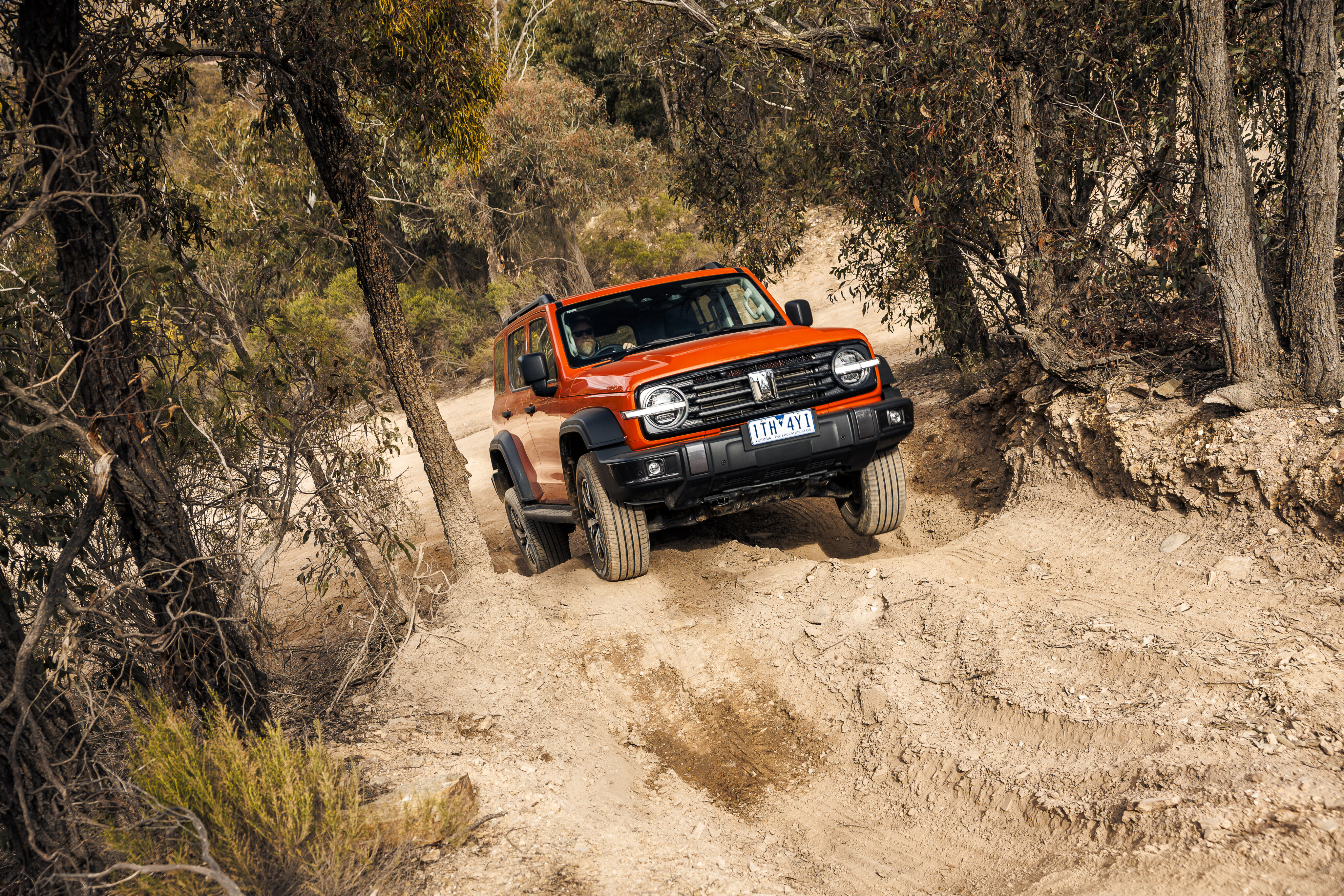
With a suite of off-road-ready features, the Tank 300 excels off-road.
A slight on the Tank is the obtrusive nature of some of its driving aids. The 300 comes with a suite of aids – autonomous emergency braking, lane-departure warning, lane-keep assist, traffic sign recognition, rear cross-traffic alert, adaptive cruise control, hill start assist, and hill descent control – and Lane Keep Assist can be overbearing and abrupt in its operation.
Other quirks include the lack of haptic feedback when operating the indicators, blind-spot cameras remaining active when they shouldn’t, and the strange design of the key fob which lacks a loop to attach to a keyring.
With a suite of off-road-ready features, the Tank 300 excels off-road. A combination of front and rear lockers, adequate articulation – 33-degree approach, 34-degree departure and 224mm of ground clearance – a ‘tank turn’ function, three-piece chassis protection, and a well-matched eight-speed automatic transmission make it a great showroom-ready off-roader.
| Tank 300 off-road specs | |
|---|---|
| Departure angle | 34.0 degrees |
| Approach angle | 33.0 degrees |
| Ground clearance | 224mm |
So while it’s more of a line-ball decision on bitumen, it’s easier to split this pair when the terrain gets dusty and dirty.
When it comes down to crunch, the Tank 300’s weaponry of off-road arsenal makes it a more capable off-roader, giving the driver more confidence to take it further into the wilderness than the Scorpio.
| ADR fuel use | Fuel tank capacity | |
|---|---|---|
| Mahindra Scorpio Z8L | 7.2L/100km | 57 litres |
| Tank 300 Ultra | 9.5L/100km | 75 litres |
How safe are they?
Where the Mahindra also loses ground to the Tank 300 is when you assess its suite of standard safety kit.
The Scorpio may have a five-star Global NCAP rating, but it wouldn't achieve five stars within the ANCAP parameters due to the lack of what is now deemed essential safety equipment.
Missing from the Scorpio’s arsenal of safety equipment is autonomous emergency braking, lane-keep assist, lane-departure warning, forward collision warning, blind-spot monitoring, rear cross-traffic alert, and reverse autonomous braking. Rear-row airbags are also absent. What it does get is an anti-lock braking system, front and rear parking sensors, and side and curtain airbags.
Unlike the Scorpio, the Tank is equipped with a full suite of safety systems including autonomous emergency braking; lane-departure warning; lane-keep assist; traffic sign recognition rear cross-traffic alert; adaptive cruise control; hill start assist; hill descent control; and a surround-view camera with ‘transparent chassis function’. The cabin has seven airbags (front, side, curtain and centre), and a TPMS is a welcome standard addition.
This all combines to give the Tank 300 a five-star ANCAP safety rating – received in December 2022 – with scores of 88% for adult occupant protection, 89% for child occupant protection; 81% for vulnerable road user protection; and 85% for safety assist.
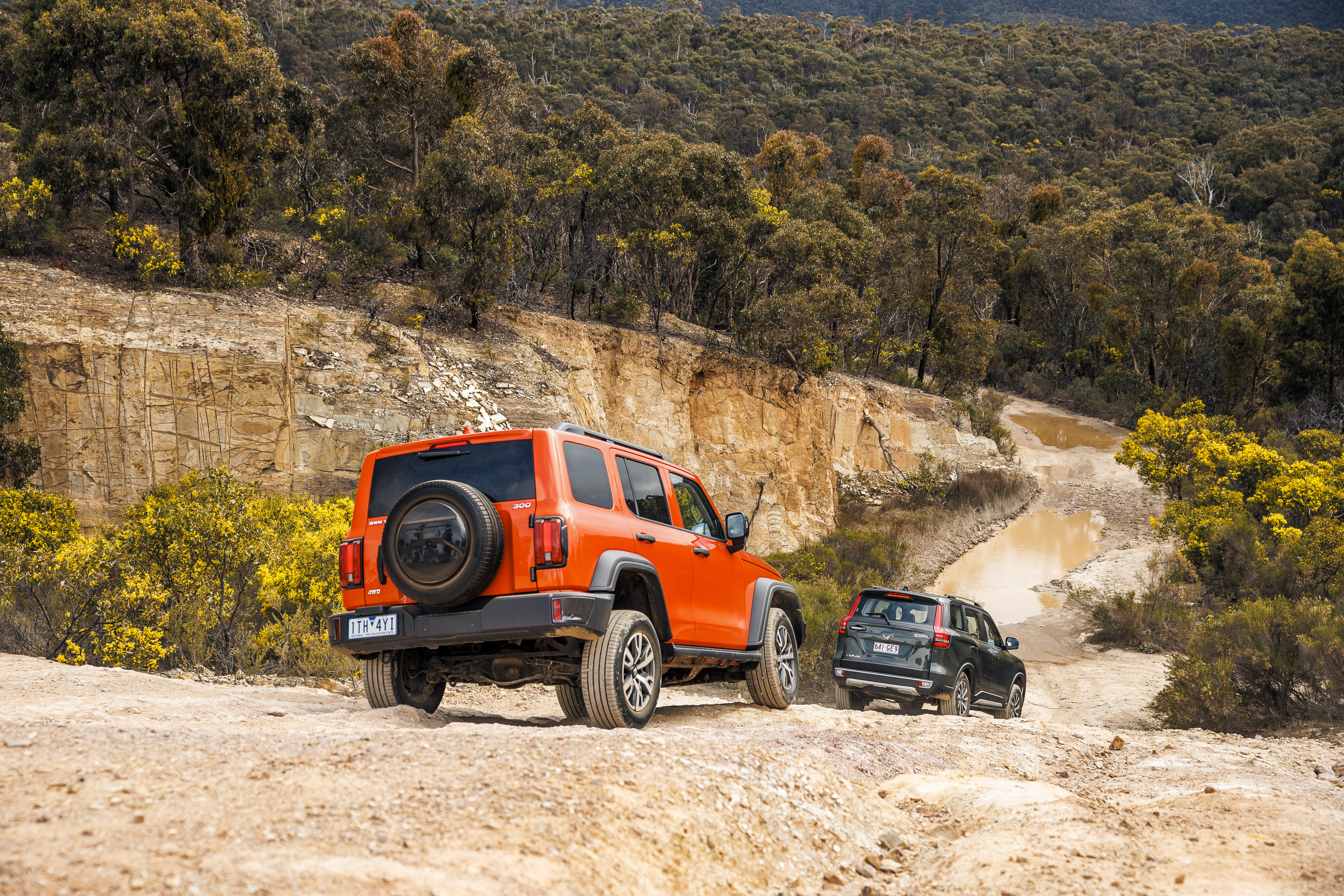
Warranty and running costs
The Scorpio comes with a seven-year /150,000km factory warranty and seven years of roadside assistance. Five years (or up to 60,000km) of capped-price servicing totals $2358.
| Time/Distance | Cost |
|---|---|
| 3 months/3000km | Free |
| 12 months/10,000km | $460 |
| 24 months/20,000km | $370 |
| 36 months/30,000km | $450 |
| 48 months/40,000km | $728 |
| 60 months/50,000km | $350 |
The Tank 300 is covered by an impressive seven-year unlimited-kilometre warranty. Capped price servicing covers the first five services and totals $2000. The Tank is also covered by GWM’s roadside assistance, which is complimentary for the first five years of ownership.
| Time/Distance | Cost |
|---|---|
| 12 months/10,000km | $300 |
| 24 months/25,000km | $300 |
| 36 months/40,000km | $550 |
| 48 months/55,000km | $550 |
| 60 months/70,000km | $300 |
VERDICT
Despite their flaws, there’s no arguing that both of these vehicles offer exceptional value. The level and quality of equipment makes them both worthy of consideration at their respective price points.
On-road, the Scorpio holds its own against the Tank, and it’s a justifiable choice if you spend 90 per cent of time on bitumen, occasionally chasing campsites. However, it falls behind the Tank when off-road, and the lack of standard safety features is a genuine concern for prospective buyers and families.
As an all-rounder, the GWM dealership is where we’d be heading. With a suite of safety kit and off-road weaponry – did we say it has front and rear lockers – at its disposal, what quirks and shortfalls the 300 Ultra does have are more forgivable.
SCORING
- GWM Tank 300: 7/10
- Mahindra Scorpio Z8L: 6.5/10
Specifications
| 2023 Tank 300 Ultra | |
|---|---|
| Price | $50,990 |
| Engine | 2.0L I4 |
| Capacity | 1967cc |
| Max power | 162kW @ 5500 |
| Max torque | 380Nm @ 1800-3600 |
| Transmission | 8-speed automatic |
| 4x4 system | Part-time 4x4 |
| Suspension (front and rear) | Double wishbone (front); Multi-link (rear) |
| Tyres | 265/60 R18 |
| Kerb weight | 2155kg |
| GVM | 2552kg |
| Payload | 446kg |
| Towing capacity | 2500kg |
| Seats | 5 |
| Fuel tank capacity | 75L |
| ADR fuel claim | 9.5L/100km |
| 2023 Mahindra Scorpio Z8L | |
|---|---|
| Price | 44,990 driveaway* |
| Engine | 4-cylinder diesel |
| Capacity | 2.2 litre |
| Max power | 129kW @3000rpm |
| Max torque | 400Nm @ 1750-2750rpm |
| Transmission | 6-speed automatic |
| 4x4 system | Part-time, dual-range |
| Crawl ratio | N/a |
| Construction | 5-door wagon of ladder chassis |
| Front suspension | IFS with double wishbone and coil springs |
| Rear suspension | Live axle with multi links, Watts link and coils |
| Tyres | 255/60-18 on alloy wheels |
| Weight | 2100kg kerb (Z8L) |
| GVM | 2610 |
| GCM | 5155 |
| Towing capacity | 2500 |
| Payload | 510 (Z8L) |
| Seats | 6 |
| Fuel tank | 57L |
| ADR fuel consumption | 7.2L/100km combined |



COMMENTS